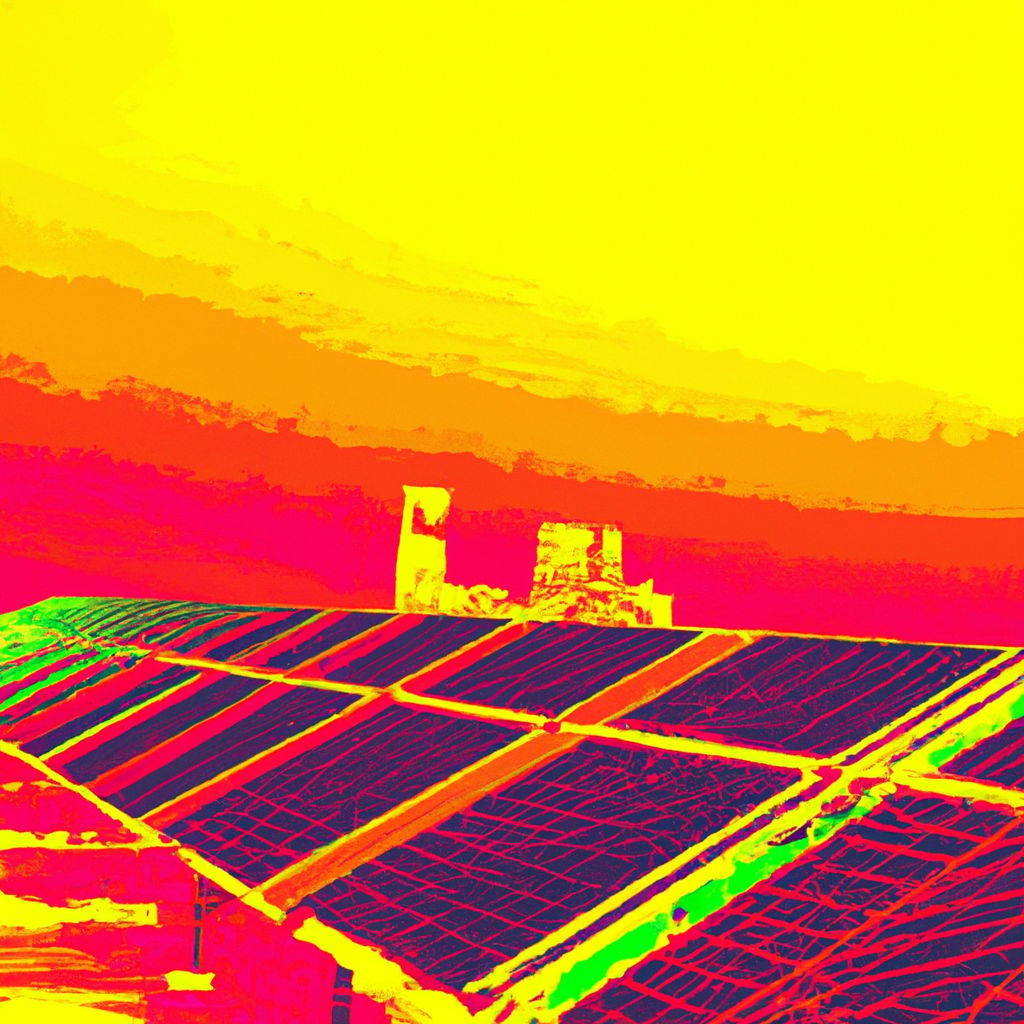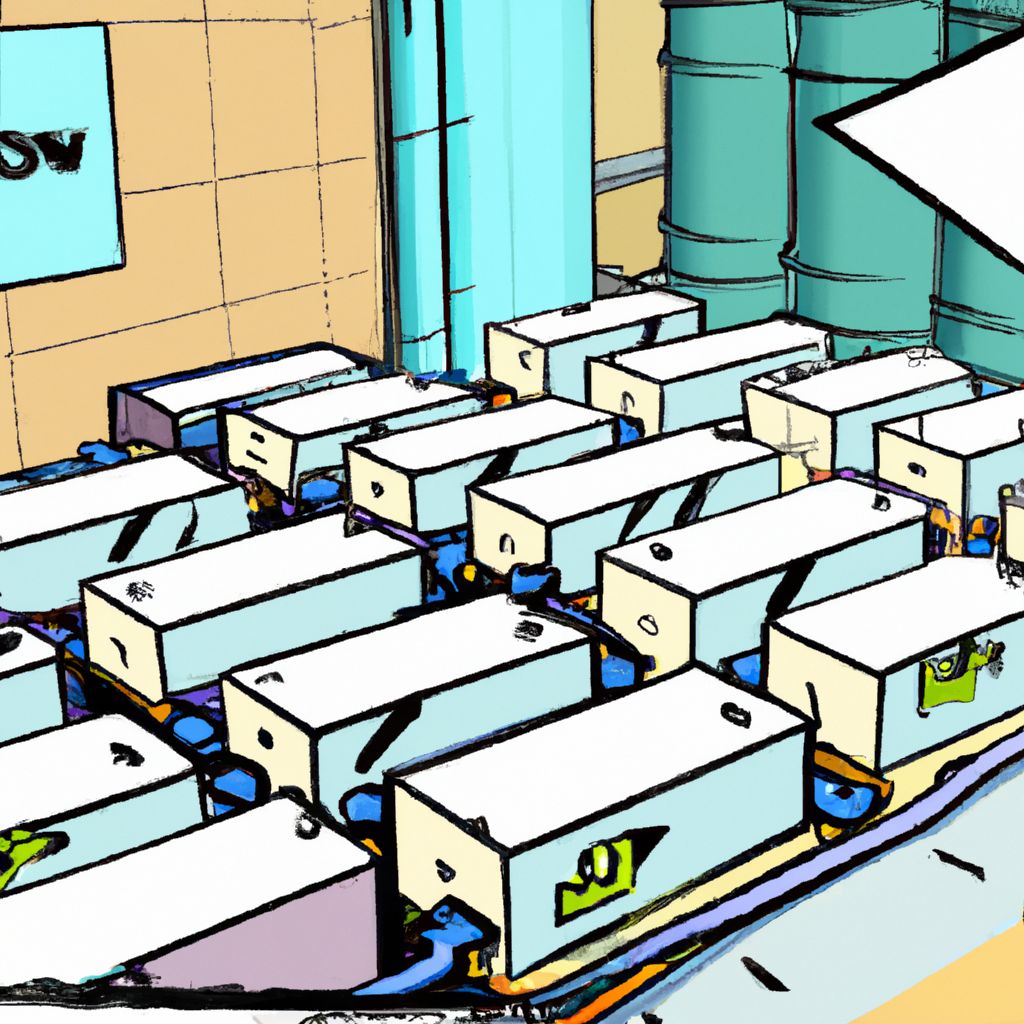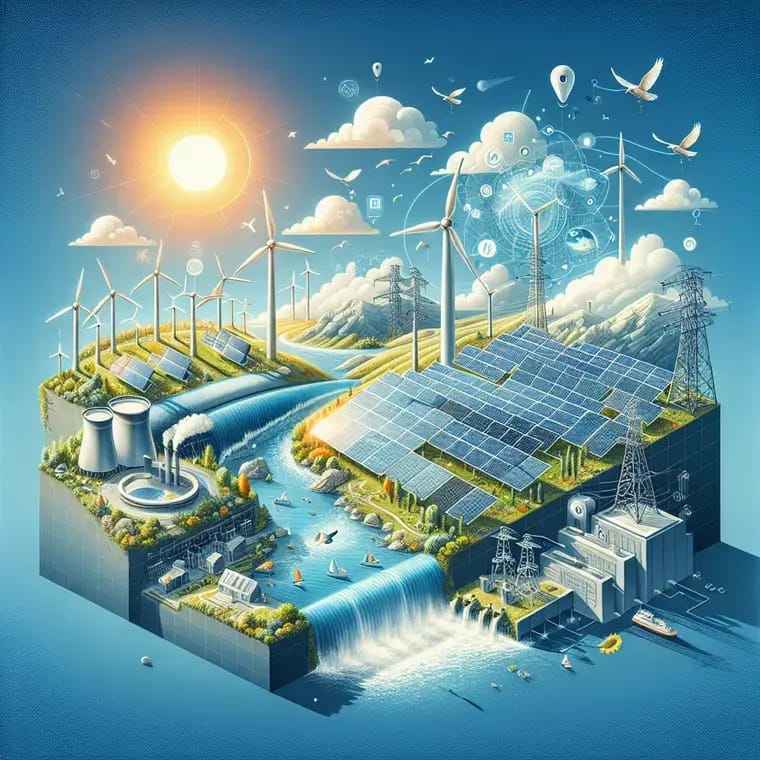Hi, Watt Wizards!
Welcome to the 36th edition of “Renewable Insights ”, your compass in the ever-evolving world of sustainable energy.
What can we expect in this edition?
🌍 REPowerEU: Shaping Europe's Energy Landscape Through Renewable Innovation
🌪️ Vestas Opts Out of Wind Turbine "Arms Race," Focusing on Reliability
🔋 Potential Tariffs Threaten US Energy Storage Deployment
🌞 India's Solar Power Soars: A Decade of Remarkable Growth
🔬Coca-Cola UAE Goes Green with Masdar's Solar Power Plant
Read previous editions here: https://muxenergy.beehiiv.com/
What’s Trending?
1. REPowerEU Plan 🔋
The REPowerEU Plan, introduced by the European Commission, is designed to rapidly reduce the European Union's reliance on Russian fossil fuels and combat the climate crisis.Key components
Increased Renewable Energy Targets: Raising the EU’s 2030 target for renewables in the energy mix to 45%, up from the previous 40%. This requires an additional 169GW on top of the Fitfor55 2030 target of 1067 GW.
Solar Energy Strategy: Accelerating the deployment of PV energy with a target of over 320 GW of new solar photovoltaic capacity by 2025 and almost 600 GW by 2030. The plan introduces a solar rooftop obligation for commercial and public buildings by 2026 and for new residential buildings by 2029.
Energy Savings: Increasing the EU’s binding energy savings target to 13% by 2030, compared to the 9% outlined in the Energy Efficiency Directive.
Diversifying Energy Supply: Seeking new markets for imports and supporting the EU’s international partners. The EU will continue to support security and the energy transition in Ukraine, Moldova, and neighbouring partner countries by stimulating the development of renewables, including hydrogen.
Renewable Fuels: Replacing fossil fuels with renewable fuels, such as hydrogen and biomethane. The plan aims for 35 billion cubic meters (bcm) of biomethane production by 2030.
Faster Permitting: Speeding up renewables' permits to minimize the time for the roll-out of renewable projects and grid infrastructure improvements.
Investment: Encouraging smart investment, with an additional investment of 210 billion euros between now and 2027 by the private and public sectors needed to reduce reliance on Russian fuel.
2. Vestas Prioritieses Reliability 🔧
Vestas, the Danish wind turbine manufacturer, is content to remain outside the intense competition to develop ever-larger turbines, even as Siemens Gamesa joins Chinese manufacturers in offering 15MW+ models. Key Highlights:
Turbine Size Race: Siemens Gamesa is now competing directly with Chinese companies like MingYang Smart Energy and CSSC Haizhuang in the very large turbine segment.
Vestas' Position: Vestas' interim finance chief, Hans Martin Smith, stated the company is "happy to be outside of the arms race," implying they see the pursuit of ever-larger turbines as a potentially risky strategy.
Focus on Value and Reliability: Vestas is focusing on delivering value and reliability, suggesting they believe a slightly smaller, but more dependable turbine can be more profitable in the long run.
Confidence in Existing Technology: Smith expressed confidence that Vestas' 15MW turbine will continue to be attractive to customers beyond 2030.
Strategic Choice: This represents a clear strategic choice by Vestas to prioritize profitability and sustainability over chasing market share through increasingly large and complex turbine designs.
Market Dynamics: The article highlights the increasing pressure in the wind turbine market, particularly from Chinese manufacturers pushing the boundaries of turbine size. Vestas is betting that a more conservative approach will be more successful.
3. Storage Tariffs ⚡
The potential imposition of a 920% tariff on active anode materials (AAM) imported from China could severely disrupt the economics of stationary energy storage deployments in the United States.Key Highlights:
Anti-Dumping Complaint: The US Department of Commerce and International Trade Commission (ITC) are adjudicating an anti-dumping, countervailing duties (AD/CVD) complaint regarding AAM used in lithium-ion batteries.
Petition for High Tariffs: US battery materials producers are seeking duties up to 920% on Chinese AAM imports.
Cost Impact: Such a high tariff would significantly increase the cost of lithium-ion batteries in the US, potentially making energy storage projects economically unviable.
Projects & Mergers!
1. Croatia Solar Surge ☀️
In 2024, Croatia's solar energy sector saw significant growth, with 397.1 MW of new solar installations, according to RES Croatia. Key points
Growth in Rooftop Installations: Approximately 90% of the solar capacity added in Croatia last year came from residential and industrial rooftop installations.
Total Solar Capacity: There are now over 26,000 solar power plants connected to the grid in Croatia, with a combined capacity of 872.1 MW. The country is expected to reach 1 GW this year. This capacity is composed of approximately 655 MW on commercial and industrial (C&I) rooftops, 155 MW on residential rooftops, and 62.1 MW of large-scale solar installations.
Challenges: Utility-scale solar development is lagging, and delays in the decision by the Croatian Energy Regulatory Agency (HERA) regarding grid connection fees are hindering investor commitments.
Future Developments: Croatia is planning to allocate €25 million for public sector solar plants and heat pumps, along with a €10 million residential solar tender.
2. India Solar Rise ☀️
India's solar power sector is experiencing rapid growth, aligning with the government’s agenda for sustainable development and energy security.India has surpassed 100.33 GW of installed solar power capacity, marking a major step toward its goal of 500 GW of non-fossil fuel-based energy capacity by 2030. As of January 31, 2025, 84.10 GW of solar projects were under implementation, and an additional 47.49 GW were under the tendering process.
Key Developments:
Capacity Expansion: India's solar energy capacity has expanded by 3,450% in the past decade, growing from 2.82 GW in 2014 to over 100 GW in 2025. In 2024 alone, India added a record-breaking 24.5 GW of solar capacity, more than double the installations from 2023.
Solar's Share in Renewables: Solar power now constitutes 47% of India’s total renewable energy capacity.
Leading States: Rajasthan, Gujarat, Tamil Nadu, Maharashtra, and Madhya Pradesh are leading states in solar energy adoption.
Government Initiatives: The government has launched schemes such as Solar Parks, Viability Gap Funding (VGF), and Grid Connected Solar Rooftop Scheme to encourage solar power generation.
Manufacturing Boost: India's solar module production capacity has grown from 2 GW in 2014 to 60 GW by the end of 2024. The country is on track to achieve a solar module production capacity of 100 GW by 2030. The Union Budget 2022 allocated INR 19,500 crore to boost domestic solar equipment manufacturing, targeting up to 45 GW of capacity.
Budget Allocation: The Union Budget of 2025 has allocated ₹1,500 crore to the solar power (grid) segment.
Challenges: The COVID-19 pandemic caused disruptions, delaying the original target of 100 GW by 2022 by nearly three years.
Total Non-Fossil Fuel Capacity: As of December 2024, India’s total installed non-fossil fuel-based capacity stood at 225.8 GW, including 97.9 GW from solar, 48.2 GW from wind, 46.9 GW from hydro, and 8.2 GW from nuclear energy.

3. Coca-Cola Solar 🥤☀️
Coca-Cola Al Ahlia Beverages Company partnered with Emerge, a joint venture between Masdar and EDF Group, to launch a 1.8 MW solar power plant at its Al Ain production facility.The project aligns with the UAE’s Green Agenda 2030 and aims to cut carbon emissions and reduce reliance on traditional energy sources.
Key Highlights:
Renewable Energy: The solar plant utilizes bifacial panels, advanced inverters, and smart monitoring systems.
Environmental Impact: The plant is expected to reduce CO₂ emissions by 1,566 metric tons annually, equivalent to powering over 300 homes for a year, and reduce oil consumption by more than 3,600 barrels annually.
Energy Contribution: Phase one of the project meets 18% of the facility's energy needs, with phase two aiming to increase solar contributions to 23% by the end of the year.
Long-Term Operation: Emerge will operate and maintain the plant for 25 years.
Strategic Alignment: The initiative aligns with the "Make it in the Emirates" strategy, promoting sustainable manufacturing practices and decarbonization in line with the UAE’s climate goals.
4. Amazon Renewables 🌍⚡
Amazon has invested in over 230 renewable energy projects in Europe, making it the largest corporate purchaser of renewable energy in the region. This investment supports Amazon's commitment to reaching net-zero carbon emissions by 2040, outlined in its Climate Pledge.Key Highlights:
Extensive Renewable Energy Portfolio: Amazon's European projects will provide an estimated 9 gigawatts (GW) of new carbon-free energy capacity, enough to power over 6.7 million European homes annually.
Project Types: The portfolio includes over 100 utility-scale solar, wind, and offshore wind farms, as well as onsite solar arrays on over 100 buildings hosting Amazon's operations.
European Expansion: In 2024 alone, Amazon invested in 26 new renewable energy projects and 20 onsite installations across Spain, Italy, Greece, Finland, Northern Ireland, Portugal, the United Kingdom, Germany, France, and the Czech Republic.
Community Support: Amazon emphasizes that these projects create jobs, support local businesses, and boost local economies.
Specific Project Examples:
Portugal: First Power Purchase Agreement (PPA) for the Tâmega Wind Complex, the largest wind farm in Portugal (expected completion in 2027), creating over 700 jobs during construction.
Spain: Investment in the Ciudad Rodrigo solar project, expected to create over 800 jobs during peak construction. Iberdrola is also helping restore a town square as part of the project.
Greece: Collaboration to support three new utility-scale wind farms.
Poland: Agreement to purchase energy from two wind farms.
Achievement and Future Goals: Amazon met its goal of matching 100% of its electricity consumption with renewable energy in 2023, seven years ahead of schedule. Globally, Amazon has invested in enough renewable energy projects to power the equivalent of 24.6 million European homes.
Technology & Innovation
1. PV EVs Boost ☀️🚗
Researchers in Germany and the Netherlands conducted a four-month study using a light commercial electric vehicle (EV) equipped with PV modules to measure its performance. The study found that the PV system contributed to a 30% increase in the EV's range during the test period.Key Highlights:
Test Vehicle: A StreetScooter Work L model was outfitted with M2 wafer silicon PV modules, achieving a peak power of 2,180 W. Modules were placed on the roof, rear, and sides of the vehicle.
Daily Usage: The EV was used for daily commutes, parked at both the researcher's home and the Institute for Solar Energy Research Hamelin (ISFH).
Data Collection: Researchers analyzed data over four months (April-July 2021), focusing on components like PV modules, MPPTs, batteries, and DC-DC converters.
Energy Contribution: During parking, the PV system generated energy that was used to charge the EV's low-voltage (LV) battery and directly power the DC-DC converter, which then supplied energy to the high-voltage (HV) traction battery.
Range Extension: The PV electricity contributed an estimated 530 km to the EV's range over the four-month period, representing 30% of the total distance travelled (1750 km).
System Efficiency: The overall system efficiency ranged from 60.44% to 66.26%, depending on whether the vehicle was parked at ISFH, parked at home, or being driven.
Research Team: The study was conducted by scientists from Germany's Institute of Energy, Materials and Devices – Photovoltaics (IMD-3), Institute for Solar Energy Research Hamelin (ISFH), and the Netherlands' Eindhoven University of Technology.
2. ACWA Storage Test ⚡🔬
ACWA Power, in partnership with Saudi Aramco, is testing vanadium flow batteries (VFBs) to evaluate their efficiency and durability in Saudi Arabia's extreme climate. This announcement was made during ACWA Power's "Innovation Days 2025" event.

Why Vanadium Flow Batteries?
Long-Duration Storage: Ideal for storing renewable energy from solar and wind.
Durability: Operates efficiently in harsh environments.
Sustainability: Supports renewable-powered water desalination systems.
Supporting Vision 2030
This initiative aligns with Saudi Arabia’s Vision 2030 goals by:
Enhancing renewable energy integration.
Driving innovation in clean energy technologies.
Strengthening energy infrastructure for a sustainable future.
Looking for unbiased, fact-based news? Join 1440 today.
Upgrade your news intake with 1440! Dive into a daily newsletter trusted by millions for its comprehensive, 5-minute snapshot of the world's happenings. We navigate through over 100 sources to bring you fact-based news on politics, business, and culture—minus the bias and absolutely free.
Key Takeaways
🤝 The potential imposition of a 920% tariff on active anode materials (AAM) imported from China could severely disrupt the economics of stationary energy storage deployments in the United States
📈 Siemens Gamesa is poised to strengthen its position in the offshore wind sector
Amazon has invested in over 230 renewable energy projects in Europe
🚀 Croatia's solar energy sector saw significant growth, with 397.1 MW of new solar installations
💡 India has surpassed 100.33 GW of installed solar power capacity, marking a major step toward its goal of 500 GW








